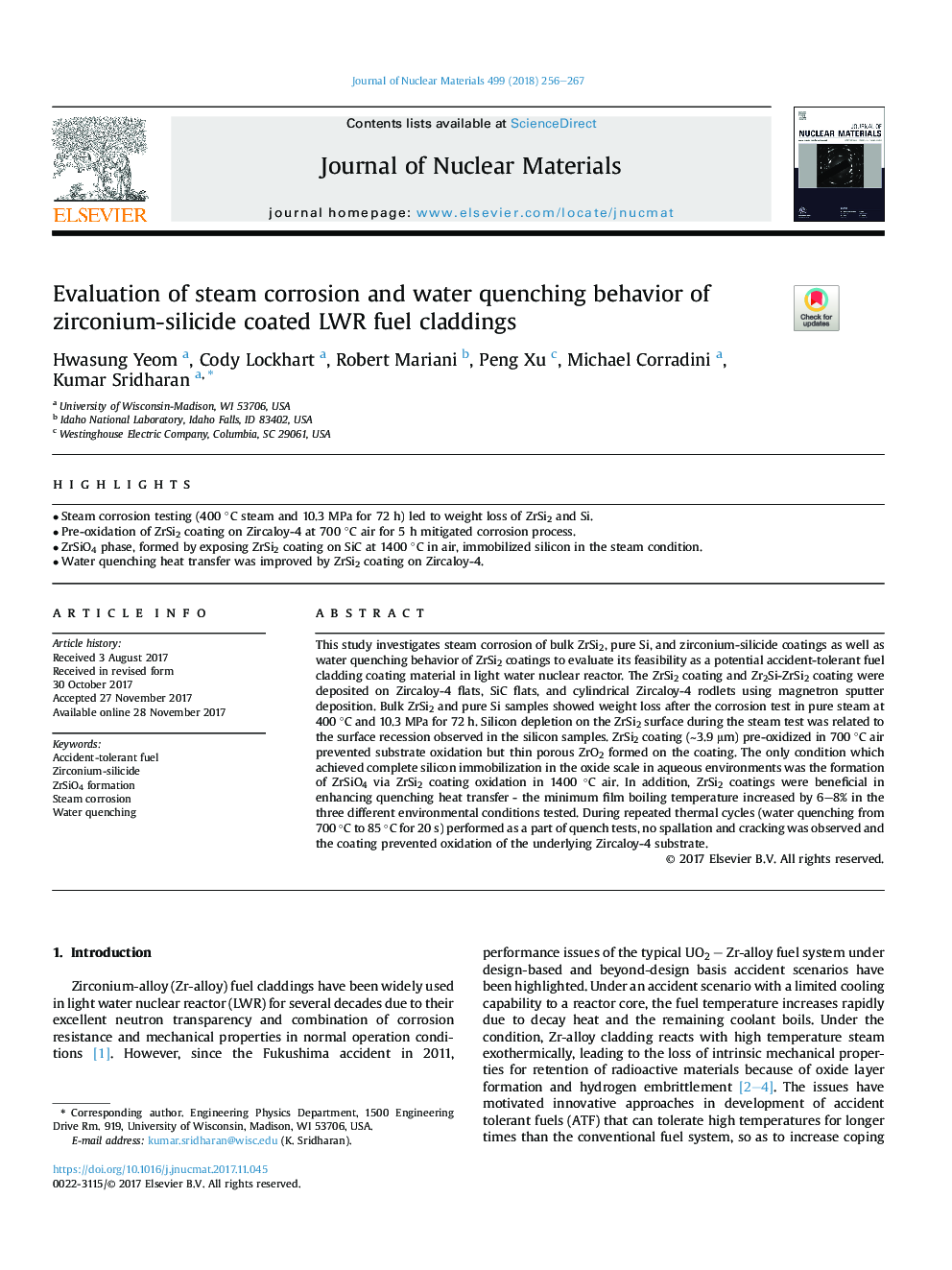| Article ID | Journal | Published Year | Pages | File Type |
|---|---|---|---|---|
| 7963453 | Journal of Nuclear Materials | 2018 | 12 Pages |
Abstract
This study investigates steam corrosion of bulk ZrSi2, pure Si, and zirconium-silicide coatings as well as water quenching behavior of ZrSi2 coatings to evaluate its feasibility as a potential accident-tolerant fuel cladding coating material in light water nuclear reactor. The ZrSi2 coating and Zr2Si-ZrSi2 coating were deposited on Zircaloy-4 flats, SiC flats, and cylindrical Zircaloy-4 rodlets using magnetron sputter deposition. Bulk ZrSi2 and pure Si samples showed weight loss after the corrosion test in pure steam at 400 °C and 10.3 MPa for 72 h. Silicon depletion on the ZrSi2 surface during the steam test was related to the surface recession observed in the silicon samples. ZrSi2 coating (â¼3.9 μm) pre-oxidized in 700 °C air prevented substrate oxidation but thin porous ZrO2 formed on the coating. The only condition which achieved complete silicon immobilization in the oxide scale in aqueous environments was the formation of ZrSiO4 via ZrSi2 coating oxidation in 1400 °C air. In addition, ZrSi2 coatings were beneficial in enhancing quenching heat transfer - the minimum film boiling temperature increased by 6-8% in the three different environmental conditions tested. During repeated thermal cycles (water quenching from 700 °C to 85 °C for 20 s) performed as a part of quench tests, no spallation and cracking was observed and the coating prevented oxidation of the underlying Zircaloy-4 substrate.
Related Topics
Physical Sciences and Engineering
Energy
Nuclear Energy and Engineering
Authors
Hwasung Yeom, Cody Lockhart, Robert Mariani, Peng Xu, Michael Corradini, Kumar Sridharan,
